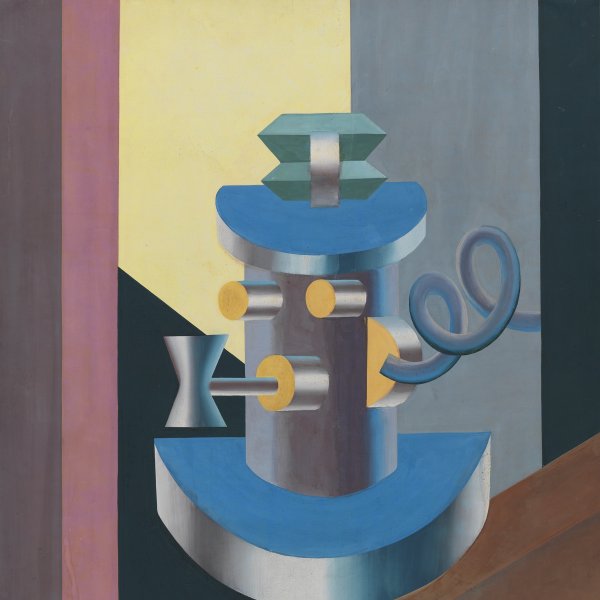Fortunato Depero
Fortunato Depero, who is associated with the Italian Futurist movement, worked as a decorator’s apprentice during the Turin Esposizione Internationale in 1910 and the following year he decided to become a painter. His early works were stylistically linked to Symbolism and addressed social themes. After publishing Spezzature-Impressioni: Segni e ritmi, a compilation of his prose and poetry accompanied by illustrations, in 1913, he went to live in Rome, where he met Filippo Tommaso Marinetti, the poet who established the Futurist ideology. Marinetti introduced Depero to the Futurist painters, who instilled in him his interest in studying dynamism and with whom his works were shown at the Galleria Permanente Futurista in Rome in the summer of 1914.
In 1915 Depero signed the manifesto Riconstruzione futurista dell’universo with Giacomo Balla and was drafted to fight in the First World War shortly afterwards. Owing to his frail health he was soon discharged from the army and was able to devote himself to art again. In 1916 his compositions became infused with a mechanical air that was also reflected in the stage sets he created from that year onwards — when Serge Diaghilev commissioned him to design the scenery for Igor Stravinsky’s Le Chant du rossignol, which in the end was not staged — and continued in 1918 with the large puppets of Balli Plastici at the Teatro dei Piccoli in Rome.
He established the Casa d’Arte Depero in 1919, and he and his wife began to design billboards and various household utensils. From 1928 to 1930 he lived in the United States, where he concentrated more on graphic art and advertising. On returning he published the Manifesto dell’arte publicitaria futurista in 1932. In parallel with these activities he continued to cultivate his interest in painting and in 1929 signed the Manifesto dell’Aeropittura with Balla, Marinetti, Benedetta Capa and others. Thenceforward his painting became centred on the importance of colour, but lost part of its originality.





